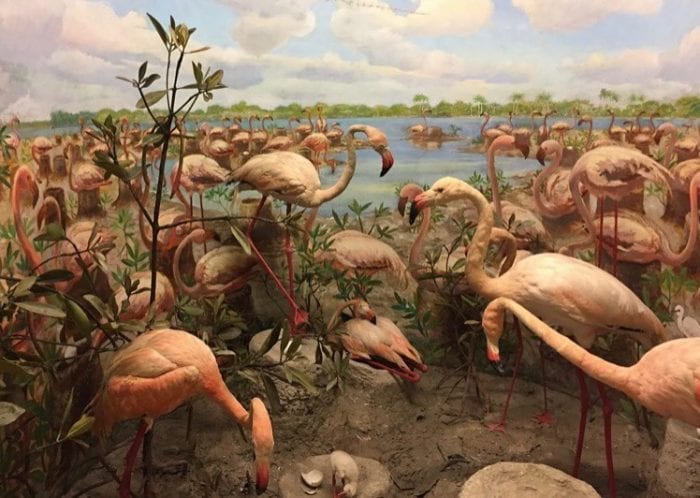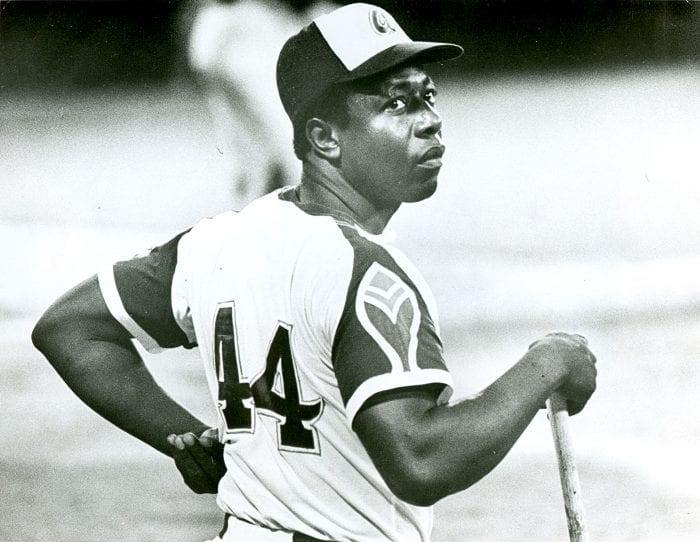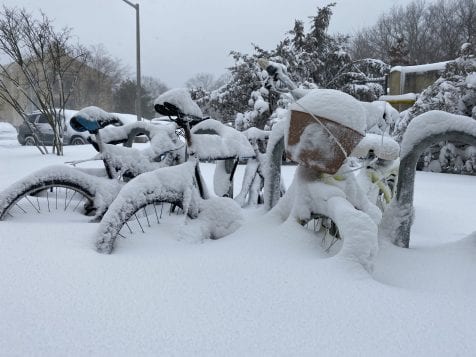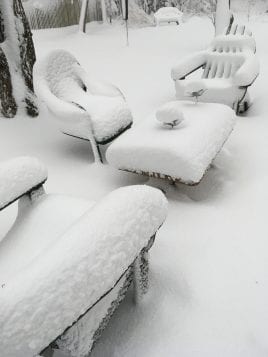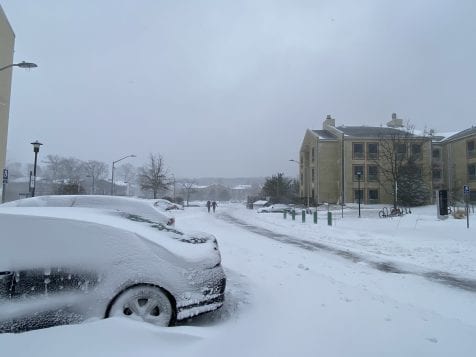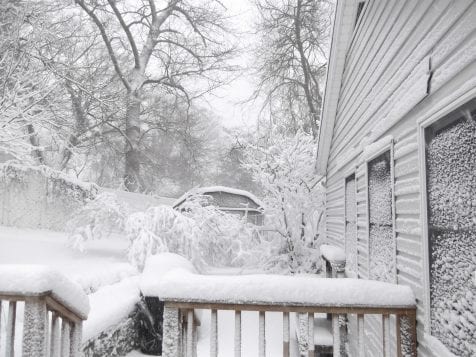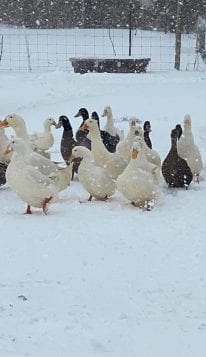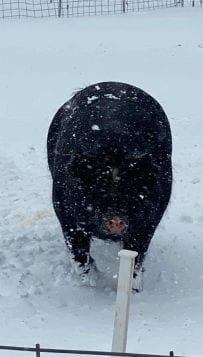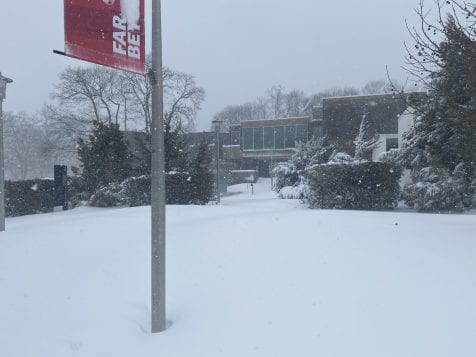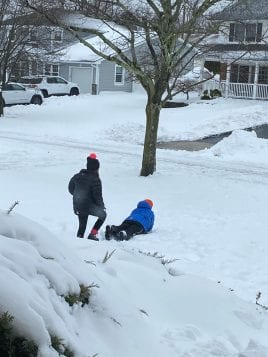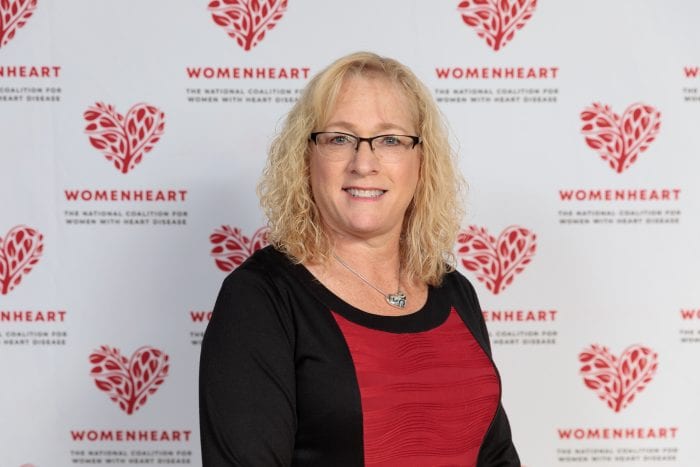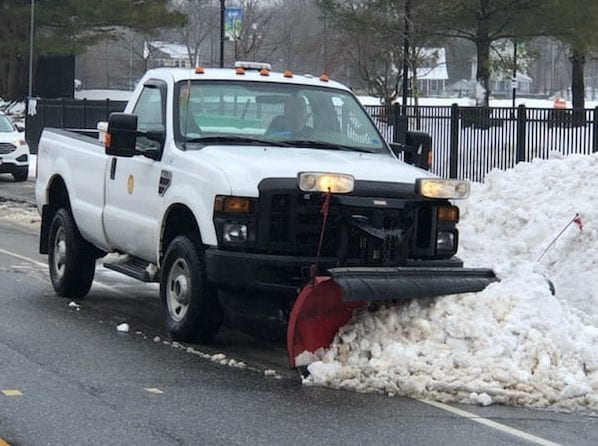Huntington residents celebrate a milestone birthday despite pandemic
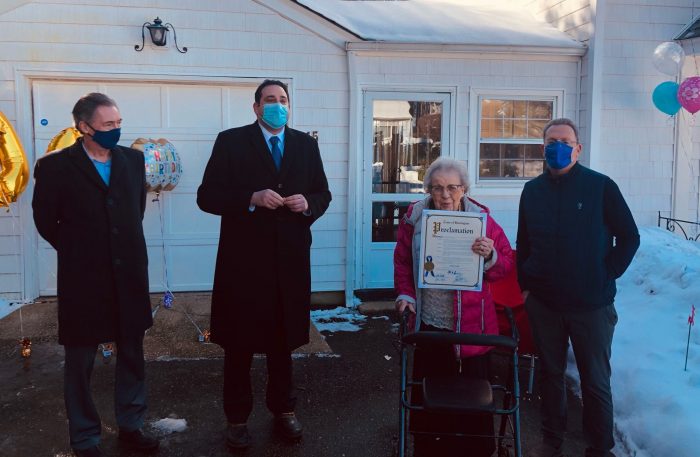
A pandemic wasn’t going to keep Huntington community members and elected officials from wishing one popular town resident a happy birthday.
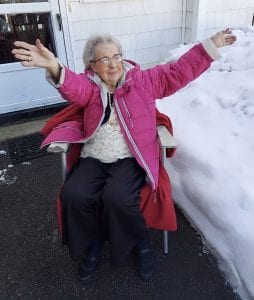
On Feb. 4, cars holding dozens of passengers were lined up on Alice Link’s Huntington street for a drive-by parade, while others waited in her driveway, to wish her a happy 100th birthday. The centenarian, who was a docent with the Huntington Historical Society, a member of the town’s Senior Center and a former teacher, is well known in the area.
In a phone interview three days after the car parade, Link said it was overwhelming — in a good way — and she was happy to see everyone.
The historical society’s executive director, Tracy Pfaff-Smith, said after the car parade, about 30 members from the society stopped by with good wishes for the centenarian and chatted with her outside.
“She’s very funny,” Pfaff-Smith said. “She was just cracking joke after joke. She’s amazing.”
Link has lived in the town for 75 years. Born in Boston, she was raised in France, until her family left the country for the U.S. after the outbreak of World War II when the American Embassy told U.S. citizens to leave France.
“They didn’t help you in any shape or form,” she said. “They just said get out of there. They didn’t send you planes or anything at all to help you.”
Through the decades, Link has kept in touch with many people she knew in France, and has been able to visit with her family, even sometimes staying in castles.
“I always told them I have no money to leave you, but I’ll leave you the best memories,” she said.
Link and her husband moved to Huntington in 1946 where they raised five children, who have given her 10 grandchildren and 11 great-grandchildren.
In addition to being a mother, she also taught Spanish and French in the South Huntington school district. While she studied at Manhattan’s Parsons School of Interior Design before she was married, she returned to school in her 40s and received her bachelor’s degree, teaching certificate and a master’s of humanities from Hofstra University.
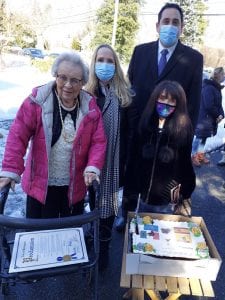
She then went on to receive a master’s degree in Spanish in 1972 after studying at Guadalajara University, Mexico, and Valencia, Spain, which led to her 20-year career as a teacher.
After retiring at 65, Link said she continued to help students through tutoring until she was 85. Her volunteer work with the historical society spans over nearly 40 years, where she served as a docent and board member. As a docent, she would give tours of the historic Conklin and Kissam houses.
Link said she has memories of old Huntington such as when a police officer would be stationed at a stand at the crossroad of New York Avenue and Main Street, and a feed grain store would load its goods on a trolley that ran through the town.
“My children say they’re not surprised my legs have given out on me because they think that I probably walked hundreds of miles, pushing my babies around town,” she said.
When it comes to family history, Link said her daughter helped trace her ancestry, and this winter, the centenarian has been busy going through old photos and sharing copies she finds with relatives when she comes across multiples. She said she appreciates photo albums more than smartphones because she feels so many often lose all their photos and information stored on devices. Sharing photos and passing on family information is something she believes is important.
As for longevity and looking and feeling young, Link said she jokingly tells everyone who asks her secret the same thing.
“Pick your genes, pick your ancestors,” she said.
Virtual Art + Design College Fair launches week of February 15
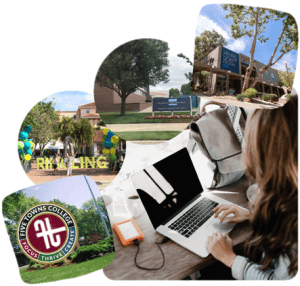
High school students, or those looking for a career change can learn more about college programs in the fields of art and design in a series of free virtual talks with college representatives beginning the week of February 15.
Presented by the Art League of Long Island, the virtual fair features the College for Creative Studies on February 16 at 6 p.m., Five Towns College on February 17 at 6 p.m., the Ringling College of Art + Design on February 18 at 6 p.m., and the Laguna College of Art + Design February 19 at 6 p.m.
The Art League‘s Virtual College Fair connects Art and Design students with premier colleges for information and recruitment sessions.
Tuesday, February 16 / 6pm
College For Creative Studies
Presenter: April Segedi, Assistant Director of Admissions
The College for Creative Studies (CCS) is a nonprofit, private college authorized by the Michigan Education Department to grant Bachelor’s and Master’s degrees. CCS, located in midtown Detroit, strives to provide students with the tools needed for successful careers in the dynamic and growing creative industries.
With world-class faculty and unsurpassed facilities, students learn to be visual communicators who actively use art and design toward the betterment of society.
|
|
Wednesday, February 17 / 6pm
Five Towns College, Dix Hills NY
Presenters: Drew Ladew, Assistant Director of Admissions and Professor Julie Haring, Computer Graphics Program
Five Towns College is a private college in Long Island, New York dedicated to providing a top education for the broad range of creative students. Located in a thriving neighborhood near the Big Apple and Twin Forks of Long Island, Five Towns College offers degree programs that will hone your skills with hands-on and online coursework, distinguished faculty, major-related internships and work opportunities.
Many students are attracted to concentrations in audio recording technology as well as a desire to be a professional in the film, television, radio, graphic design, music, theatre arts and technical design industries. The Interactive Computer Graphics (ICG) program offers a challenging, idea-driven environment that teaches students skills in creative design technologies. These technologies are used in a variety of redefined creative ways, including 2D/3D Animation, Virtual Reality, and User Interface design.
|
|
Thursday, February 18 / 6pm
Ringling College of Art + Design
Presenter: Kirche Zeile, Northeast Regional Admissions Counselor
Ringling College of Art and Design is a small, fully accredited, private, non-profit, art and design college located in sunny Sarasota, Florida. At Ringling, students are encouraged to take risks, question norms, and rethink “the way things are.” Students will create work with purpose and meaning and are pushed to be stronger, better, and more powerful artists. All while being supported and encouraged by an award-winning faculty of working creatives. Ringling offers thirteen creative disciplines-eleven BFA programs and two BA programs.
|
|
Friday, February 19 / 6pm
Laguna College of Art + Design
LCAD is a small private nonprofit art college located in sunny Southern, California. LCAD offers accredited BFA Degrees in Animation, Drawing + Painting, Entertainment Design, Experimental Animation, Game Art, Graphic Design + Digital Media, and Illustration as well as several Minors, including Art History and Creative Writing. Students may now specialize in an area of study within a given major, such as focus studies in Action Sports.
LCAD’s partnerships with some of the world’s most recognized creative leaders—including Nike, Hurley, and Blizzard Entertainment—allow them to meet industry demands and ensure that LCAD graduates continue to enjoy high job placement rates. Low tuition costs, inspiring locale, exceptional faculty of professionals and connections with industry leaders all have helped earn LCAD a reputation as one of the top colleges of choice for motivated artists and designers seeking career advantages in their chosen fields.
For more information visit www.artleagueli.org or email [email protected].
Long Island resident shares experience playing ball alongside the late Hank Aaron
By Rich Acritelli
Hank Aaron: “I tell young people — including my granddaughter — there is no shortcut in life. You have to take it one step at a time and work hard. And you have to give back.”
These were the words of one of the most prolific baseball players ever to hit against opposing pitchers. Aaron had staggering numbers that saw him compile 755 home runs, 3,771 hits, 2,297 runs that were driven in, and he held a career batting average of .305.
On Jan. 22, this noted giant within “America’s Pastime” died at 87 years old. Always armed with a big smile and a can-do attitude, Aaron was a true ambassador to baseball that saw him reach some of the highest personal achievements that any person has ever gained in this game.
Surpassing Babe Ruth was an endeavor that Aaron worked on during the length of over 20 years in baseball. After the 1973 season, he hit 713 home runs and had to wait the following season to surpass this record. At 9:07 p.m. on April 8, 1974, in front of over 53,000 fans, Aaron stepped up to the plate, with light bulbs going off, and reporters were eager to write about the two-run home run swing that surpassed Ruth.
Since he left baseball in the late 1970s, Frank Tepedino worked at Port Jefferson Sporting Goods, where he was a fixture behind the counter. For decades, he screened T-shirts, uniforms and he provided professional advice for local families to help them pick out baseball equipment.
This Brooklyn native and resident of St. James was a talented hitter who was on the rosters of the New York Yankees, Milwaukee Brewers and the Atlanta Braves. He was later a 9/11 firefighter who threw out the first pitch in the New York Yankees playoff game against Oakland Athletics, only weeks after the nation was attacked by terrorists.
During his career, Tepedino played next to the historic baseball figures of Mickey Mantle, Whitey Ford, Thurman Munson, Bobby Murcer and Aaron. Tepedino opposed baseball legends of Joe Morgan, Johnny Bench, Willie Mays, Mike Schmidt and Bridgehampton local farm boy Karl Yastrzemski.
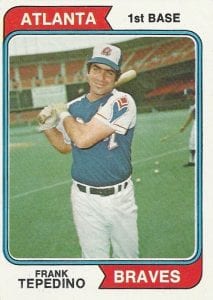
Tepedino recalled that it was an amazing experience to compete against the best players ever to put on a uniform. According to him, “Players like Aaron changed the entire atmosphere of the game, the stadiums and their own teams. They were a different caliber of talent and playing with Aaron, you always appreciated his work ethic toward the game. You always wanted to do your best within his presence. If you appreciated baseball greatness, Aaron was one of the top five ever to take the field.”
When looking at the newsreels and pictures of Aaron hitting the pitch from Los Angeles Dodgers’ Al Downing over the left field wall, Tepedino can be seen welcoming him after he rounded the bases. On an electric night, the look of Aaron running around the bases and being patted on the back by two fans was one of the greatest sports scenes ever recorded. With his sideburns and blue Braves jacket, Tepedino along with his teammates and coaches, greeted Aaron at home plate.
During this chase to surpass this record, Tepedino recalled, “Everyone was wondering when Aaron was going to hit enough home runs — except Aaron. As a power hitter, he was fully confident that he would eventually catch Ruth.”
The game resumed with Aaron staying in the game for one more at bat, but he was physically and mentally exhausted from this daunting experience, and Tepedino replaced him in the lineup.
It was a wonderful night for baseball, but there were many concerns over the personal safety of Aaron. Even in 1974, 20 years after the Brown vs. Board of Education ruling that ended the “separate but equal” conditions within public schools, poor conditions for Black Americans were still present. Tepedino remembered that these ballplayers had to face difficult segregation conditions within hotels, restaurants and traveling accommodations.
Long after President Harry Truman (D) desegregated the armed forces, Jackie Robinson broke the baseball color barrier and President Lyndon Johnson (D) signed the Civil Rights Act of 1964 and the Voting Rights Act of 1965, African Americans were still battling for equality. During his own career, Tepedino met Robinson and as he played for the Yankees, he was trained by Olympic hero Jesse Owens. Tepedino looked back “in awe” of these athletes that accepted an immense responsibility to fight for an entire race of people in America.
In 1948, a younger Aaron cut class in Mobile, Alabama, to see Robinson speak at a local drugstore. After seeing this extraordinary player and activist speak, Aaron was determined to be a professional ballplayer who later faced similar hatred problems that Robinson had to endure with the Brooklyn Dodgers.
At an early age, Aaron was continually warned by his parents to stay clear of the Ku Klux Klan that marched near his home and widely displayed burning crosses. In 1952, Aaron signed his first professional contract with The Negro Leagues team of the Indianapolis Clowns, where early scouts determined that he was an “all-around hitter.”
Tepedino identified the racial complexities of this time, noting that “the Black ballplayer in the South still had limited rights, compared to when we played games in Chicago, where you would see leaders like Jesse Jackson visit our teammates in the locker room.”
For Aaron, it was an amazing chase to overcome Ruth’s record, but at a dangerous personal cost. Starting in 1973, the Atlanta Braves had a security presence for him during home and road games. Eventually the Federal Bureau of Investigation sent agents on the field to protect him from the numerous death threats that he received.
Every day, Aaron read hate mail that threatened the kidnapping of his children if he attempted to break Ruth’s record. Aaron later stated on CNN, “I’ve always felt like once I put the uniform on and once I got out onto the playing field, I could separate the two from, say, an evil letter I got the day before or event 20 minutes before. God gave me the separation, gave me the ability to separate the two of them.”
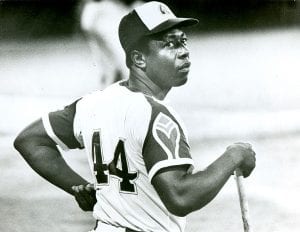
In 1973, for most of the season the Braves were contenders to make the playoffs. At 39 years old, Aaron was at the cusp of passing this record by hitting 40 home runs. Tepedino remembered that the enhanced scrutiny and media hype never impacted Aaron’s performance on the field. Tepedino also described the positive support that his manager Eddie Mathews had toward his former longtime teammate in Aaron. Both Mathews and Aaron terrorized opposing pitchers within the heart of the Braves lineup by hitting between them 863 home runs. Next to Lou Gehrig and Babe Ruth, this was one of the most feared tandems ever to consistently oppose pitching for many years.
Unlike daily media scrutiny of today, Aaron during most of his pursuit, only had the Braves beat writers covering the team. It was not until he was within reach of Ruth that there were over 50 reporters following his every movement until April 8, 1974.
Tepedino enjoyed playing with Aaron and remembered him to be a “soft-spoken man, that never bragged, was approachable, that always flashed a big smile. During this stressful time, the team realized that he was under immense pressure, and we all gave him his space.”
With a full house of fans, and Gov. Jimmy Carter (D) in attendance, Aaron’s home run was hit beyond the left field reach of Dodger Bill Buckner. With his family around him, Aaron later held onto the ball that was retrieved from the fans. After the game, he spoke with President Richard Nixon (R) who congratulated him on this endeavor. Later after Aaron crossed home plate with this record in his name and surviving through this immense pressure, the prolific hitter said to the media, “I just thank God it’s all over.”
The last time that Tepedino saw Aaron was five years ago at a major dinner in New York City to support Baseball Assistance Team. They were with many other former ballplayers helping to raise money for some of their peers who had fallen upon hard economic times.
While Tepedino was pleased to see Aaron and to say hello to this legendary figure, these former players were once again together to share a special “comradery and fraternity” of former athletes who were reminiscing about their days in the sun.
Through the passing of an absolute gentlemen in Aaron, who was a special player and a citizen to fight for enhanced rights for African Americans, Tepedino surely has witnessed major American memories within local and national history. Through his own immense baseball talent, Tepedino shared the field with athletic figures who will never fade away from “America’s Pastime.”
Sean Hamilton of the Rocky Point High School History Honor Society contributed to this article.
Snowstorm slams North Shore
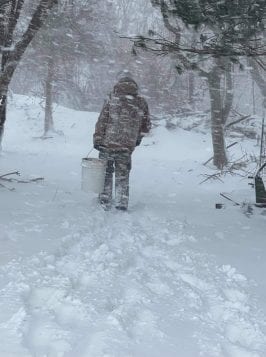
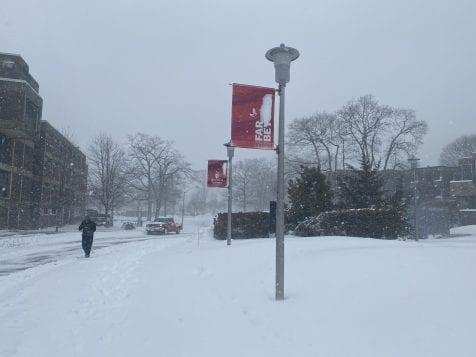
On Monday, Feb. 1, the first snowstorm of the year hit Long Island, causing people to stay home and shovel nearly two-feet of snow. We asked residents to share their snow day photos with us.
Northport public listening session addresses village’s police concerns
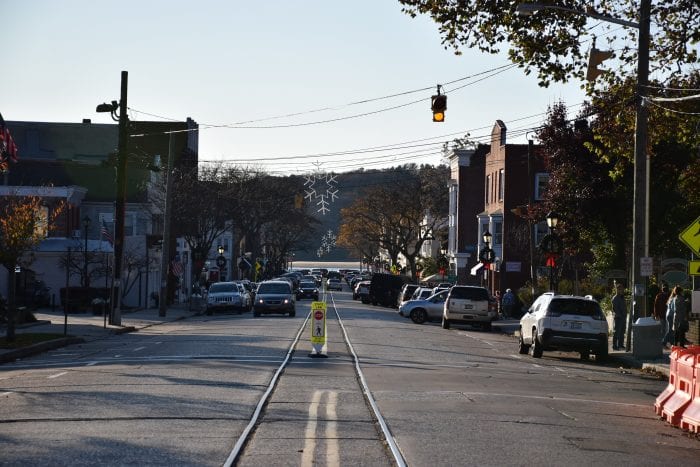
By Chris Cumella
The Village of Northport Board of Trustees held a virtual conference via Zoom Feb. 2 to extend outreach to the community and welcome any questions, comments or concerns that the residents had about the village police force.
The meeting was part of an ongoing effort to comply with Gov. Andrew Cuomo’s (D) executive order for police reform and reinvention.
Speaking with 37 participants, the board of trustees discussed reformation plans for the Northport Village Police Department moving forward. Representatives said that they have already taken the village’s residents and their thoughts into consideration through a series of surveys directed towards different demographics of those residing in Northport.
“We had done random survey sampling of residents within the Northport zip code,” said Mayor Damon McMullen, referring to one of the five surveys that the Northport local government had sent out to the general public as a means to receive feedback. “We put that survey online so additional residents could partake, and we could get more comment and opinion in that venue.”
According to Joe Schramm, a marketing and communications executive and member of the Northport Village Police Review Committee, the committee has been seeking input from the community to understand how the public perceives the work of the village’s police force. There were a variety of methods for gathering public feedback that the committee had been using.
An anonymous survey was mailed out two weeks ago to residents in the 11768 area code, to which 78 percent responded. Schramm said the results were primarily positive. Another anonymous survey targeted seniors of Northport High School. However, the committee had only seen a 5 percent response rate, which Schramm detailed as “not quite reliable.”
Regardless of their location, surveyors were also able to answer yet another anonymous survey on the Village of Northport official website, which had shown an attractive response rate of over 200 participants. All surveys had closed at 5 p.m. Jan. 31.
“We are listening to 100 percent of your commentary,” Schramm said to the participants. “We are taking every single comment into consideration. We’ll have the chance to review things. We’re going to take all the comments people had made about the previous four tactics as well.”
While the police committee received positive feedback, it did not come without criticism. A common concern was addressed by a couple of participants in the call regarding an alleged altercation between a former Northport policeman and a resident, which caused the ex-officer to draw his weapon on the other individual.
First brought to the board’s attention by a Zoom participant and village resident known as Mary, the quarrel occurred Sept. 28 when “a Trump supporters caravan” with concealed license plates had rolled down Woodbine Avenue exhibiting flags and signs in support of the former president.
Stuart Besen, village attorney, said that the board could not comment. However, an ongoing investigation is being made in cooperation with the Suffolk County District Attorney’s Office.
Another resident, Patricia Naples, addressed her concerns about the incident by calling the situation worrying. “Who gives anybody the right to draw a gun because you legally have the right to own one?” she said. “Carry a gun, sure, but you cannot take it out in this village.”
McMullen closed the meeting by reinforcing the idea that it was through public outreach that any changes would transpire in the Village of Northport.
“We’ve been doing a very good job compared to a lot of other municipalities,” the mayor said. “Village residents are not the only ones that are impacted by the Northport Village police. We wanted to get a reaction from the rest of the community.”
Miller Place woman shares her heart health story
To commemorate American Heart Month, February is dedicated to heart disease research and heart health care. Dawn Blatt, a resident of Miller Place, had a heart attack on Feb. 20, 2012, while on vacation with her family and chooses to share her story.
While in California, she began feeling chest pressure that lasted about 20 minutes and eventually went away. She thought it was nothing, and didn’t want to say anything or ruin the trip.
“About two hours later, when we were sitting in the hotel, that chest pressure came back and actually got worse,” she said. “I started getting pain down my left arm, the chest pressure turned to some pain. I was feeling anxious.”
Blatt knew something was going on and she had to act on it. She was getting ready to head into the elevator to catch a ride to the hospital in a city she didn’t know when her husband called 911.
The paramedics did vitals and were talking about EKG changes in her hotel room. Blatt, a physical therapist, heard terms that are usually said to her patients — not typically to her.
The then 46-year-old was taken by ambulance to the hospital and after talking with a doctor, he said that she did indeed have a heart attack.
“That sense of denial that I was having the whole time even though I knew what the symptoms would correlate to was still a shock for me to hear those words,” she said. “And everybody that came in to the room kept saying, ‘Oh, you’re so young!’ and that really got me angry after a while because obviously I wasn’t too young — I had a heart attack.”
The mother of two did not have previous signs or symptoms. She didn’t have the risk factors that would lead people to think she would have a heart attack. Blatt said she was always on the treadmill and was an active person.
“The recovery was physically and emotionally challenging for me,” she said.
In California, to address her cardiac catheterization, one stent was put in her left anterior descending artery in her heart during 1st cardiac catheterization, and four more were added when she came home to New York.
Nearly nine years after the heart attack, Blatt now has no restrictions or limitations.
“I feel like I was lucky,” she said. “But since then, I have started to learn about the fact that so many women are not aware of risk factors, or that the signs of a heart attack can be different for women, especially.”
So, she’s using her voice to talk to others and build a supportive community for people who’ve have been through similar situations. An active member of the national organization WomenHeart, she’s there for other women who have dealt with heart problems big and small.
“The women that I have met through WomenHeart are my heart sisters, and they’re the people that get it,” she said. “It’s so helpful to be able to ask questions of people who’ve been through similar experiences, and that can help give you support or ask questions. That’s why I have decided to help spread the word, raise awareness and support other women living with heart disease.”
Blatt added that sharing her story with others not only gives them someone they can relate to, but is a healing experience for her, as well.
According to Blatt, she has learned a lot of facts about heart health from the nonprofit. WomenHeart has a directory of scientific data, links, an advisory panel of doctors and researchers throughout the country, and is trustworthy and credible.
She said, for women specifically, it’s important to know that heart disease is the leading cause of death for women and there are plenty of signs to know when something wrong is happening.
“A lot of people think, ‘Younger women don’t have heart attacks, they don’t have heart disease,’ but I’ve met so many women in their 20s, 30s and 40s with various forms of heart disease,” she said. “It’s not just an old man’s disease anymore — it’s affecting women.”
Blatt said there’s more to a heart attack then pressure pain in the left arm, and it’s not “just an anxiety attack.”
“Pay attention, seek medical attention, seek medical care, get answers to your signs and symptoms, and if you’re not happy with what they’re telling you, get a second opinion,” she said. “When women go to the ER, if they think they’re having a heart attack, use the words ‘I think I’m having a heart attack.’ That will get you in, otherwise you’re going to be waiting. When you’re having a heart attack, the quicker you get in and get treated, the less damage you can have.”
Friday, Feb. 5, is National Wear Red Day. Everyone is encouraged to wear red and raise support for American heart health.
Editorial: Let It Snow
The first day of February reminded us that winter is still here, and a foot or more of snow can fall from the sky at any time wreaking havoc on our everyday lives. Heavy snowfalls may be welcomed by skiers and children, but for everyone else the snow can be a nuisance and even a danger.
On Monday, as with previous storms, weather forecasters and elected officials reminded residents to stay off roads if they didn’t need to go out. In the past, despite those warnings, many found themselves still having to go to work. Nowadays, after trying to navigate business during a pandemic for months, companies have learned that a good deal of work can be done from home.
For nearly a year, employers and employees all over the country have embraced the use of email, Google, Zoom, messaging platforms such as Slack and more. Some in New York had no choice in the beginning as many businesses in the state that were deemed nonessential were required to close down. Others have chosen, even after the shutdowns were lifted, to continue having employees work from home to help stop the spread of the coronavirus.
The use of modern technology has kept the work flowing and employees connected. Many have found that their workers are more efficient as there are fewer distractions at home, and without having to deal with their commutes, many are willing to take the time they would have been in the car, bus or train and use it to do more work.
Working from home can be a game changer not only during long-term shutdowns or for taking care to keep employees healthy, but it can also be used when driving just isn’t wise, especially for workers who have strict deadlines to meet. Imagine, now employees on a snowy day are less stressed because they don’t have to worry about hazardous roads.
During a pandemic, the work-from-home option has helped to keep employees healthy, and on the day of a storm, it helps keep them safe. In turn, the fewer people on the road, the fewer calls police officers receive, which in turn keeps them safe, too. Because, it doesn’t matter what type of car a person has, whether big or small, if snow is blowing across the roads and visibility is compromised, it’s not wise to be on the road
Law enforcement and health care workers need to be out on the roads to get to their jobs to keep the public safe and healthy, the rest of our jobs aren’t as essential.
Let’s take what we’ve learned in 2020 and apply it in the future to keep residents safe. If there is one lesson that we can take with us from the pandemic, it’s that things can be done differently and still produce the same results.
Will there be more snow this winter? We don’t know, but what we do know we’re ready for it. Bring it on!
D. None of the Above: Bird expert shares thoughts on snowstorms, snowy owls and snow angels
By Daniel Dunaief

For the past week, I’ve had birds on my brain.
For starters, Central Park birders headed to the famous urban greenway recently to catch sight of a snowy owl, the first time people documented the presence of the bird in the park in about 130 years.
I wrote to a bird expert, Noah Strycker, who is both a celebrated avian author, having written “Birding without Borders,” and a master’s candidate at Stony Brook University in the laboratory of Heather Lynch, a penguin scientist and the IACS Endowed Chair for Ecology & Evolution.
Strycker responded to numerous questions about the owl and the snowstorm that blanketed the region earlier this week.
In response to a question about exactly what might bring a snowy owl to the city, Strycker suggested that these birds often “irrupt,” a word for traveling greater distances than normal, south from their normal Arctic range in winters following good breeding summers.
“Their appearance in New York may be related to an abundance of lemmings in the Arctic last summer,” Strycker wrote. In other words, these well-fed birds may have been able to journey further from the Arctic after a bountiful summer.
While Strycker didn’t catch sight of the owl this time, he did see one on Long Island last winter. They appear on the south shore almost every year, although it’s unusual to see one in Central Park because they prefer beaches and open areas, which are closer to a normal tundra habitat.
As for the rare birds Strycker has seen in the area, he said he got to see a Western Tanager and an Ash Throated Flycatcher in Green-Wood Cemetery in Brooklyn this fall. These are birds from the western part of the country, which don’t visit the Empire State too often.
Vagrant birds, which occur in areas outside their typical range, can appear in the area, a byproduct of a wrong turn during a long migration. So, what happens to birds during a snowstorm, I wondered.
For the snowy owl, if he were still here, the precipitation probably wouldn’t have been much of a problem, as his name suggests.
“Flying through falling snowflakes isn’t as much of an issue as flying in high winds, which do, occasionally, literally blow birds off course,” Strycker wrote.
During the storm, many bird species will tuck themselves in a protected spot, like in a dense tree to ride out the flakes.

“This is a good time to watch your hedges and evergreen trees, which provide nice cover in the winter,” Strycker suggested.
Strycker said people could do seed eating birds — like sparrows, finches, cardinals, doves, chickadees, and jays — a favor by restocking a feeder before a snowstorm.
“They will all come to bird feeders for sunflower seeds and suet,” he said.
Snowy owls, on the other hand, don’t need handouts or feeders. They find their food, typically small mammals, by using their keen senses of sight and hearing. Shaped like a disc, an owl’s face concentrates faint sounds of rustling under the snow, allowing it to find prey it can’t see.
Strycker has always wanted to find an owl footprint in the snow, which looks like a snow angel. The owl lands on the snowy landscape to find its prey and lifts off, leaving footprint evidence of its meal.
As for the effect of the snow on a bird’s survival, Strycker said most of the birds in the area manage through the colder months.
“Snowstorms have been occurring in New York for a very long time, so birds that spend the winter here have mostly adapted to surviving them,” Strycker wrote.
Between You and Me: Pssst! There is an electric automobile in your future
By Leah S. Dunaief

When General Motors announced last week that the company would aim to sell only electric cars and trucks by 2035, it shook up the industry. There are already electric cars on the road, although they number fewer than one percent.
Tesla, the electric car maker, has been much in the news lately since Wall Street values the company at more than ten times that of General Motors, and indeed, more than Toyota, Volkswagen, Ford and General Motors combined.
Nonetheless, this was a sharp turn for G.M. And as the largest automaker in the United States and the fourth largest in the world, what G.M. does affects everyone else down the automotive line.
It is no coincidence that the announcement came only a day after President Biden signed an executive order directing his administration to fight the problem of climate change. The Environmental Protection Agency is developing tough new tailpipe pollution regulations to control the largest source of planet-warming emissions in the short term. G.M. is aligning itself with the new administration’s goal in its drive to electric power. Furthermore, just three months ago, China ordered that most vehicles sold there must be electric by 2035. China is G.M.’s and the world’s largest market.
So all roads would seem to be pointing to a preponderance of electric cars by 2035, at least as of the present. But there remains a significant hurdle in the production of electric cars. While countries can certainly create charging stations along the roads in the same fashion as we now have gas stations, and President Biden has asked for 500,000 public charger stations to be built by 2030, the challenge is the batteries required by the cars.
The battery packs have to be big, and right now to be big means to be expensive. Gasoline engines for equivalent cars cost less than half as much. China is the leading producer of these batteries, and of electric motors, which is not surprising since Chinese leadership has long viewed its dependence on oil imports as a considerable vulnerability.
Therefore, major auto companies, like Daimler and Toyota, are already manufacturing their electric cars in China. So will many of the Ford Mustang Mach-E models be made there. Tesla started making cars in Shanghai over a year ago to sell in China.
So, folks, it would seem that in our not-too-distant future, we are destined to own electric cars. G.M. is planning to spend $27 billion to introduce 30 electric models by 2025, just a short generation away for those buying new cars this year. They are building a plant in Ohio to make batteries for those vehicles and to develop better batteries. G.M. now feels it could make electric vehicles that would cost no more than gasoline ones. And when G.M. in October offered its Hummer electric pick-up truck, enough orders had come in within a day to fill the entire year’s planned production.
The Chinese have cleverly offered their huge consumer market in exchange for technical information. Through joint ventures with companies of other nations, along with their own considerable research, they have become the leader in battery development. Further rounding out the picture for the urgency of electric vehicles is the ban by Britain, Ireland and the Netherlands on new gasoline and diesel cars as of 2030.
Utility companies will have to improve their output by as much as 25 percent, which they can do at considerable expense. Guess who will be paying the tab! But the increased rates should be offset by the savings in gasoline, at least that would be the plan.
Power plants would also have to engage in some sort of rotation so that not everyone can charge their vehicles at the same time. They would also help the global climate change situation by using more solar and wind instead of coal and natural gas, in short by cleaning up the power grid.


